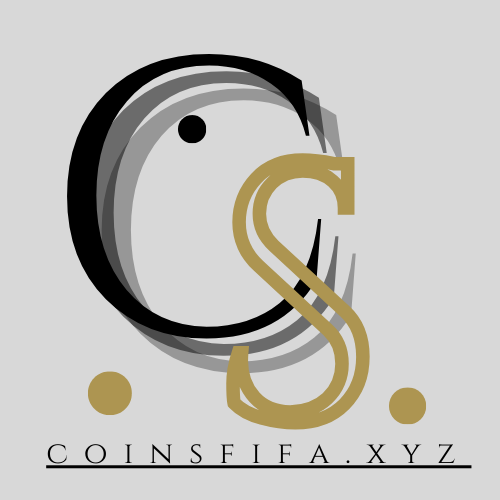Blog
Cotton Blend Fabric: The Perfect Balance of Comfort and Durability
Cotton blend fabrics are a popular choice in the textile world, offering the natural comfort of cotton with the added benefits of other fibers. By combining cotton with materials like polyester, rayon, or spandex, manufacturers create fabrics that are more versatile, durable, and suitable for a wide range of applications. Whether in clothing, upholstery, or linens, cotton blends provide unique qualities that appeal to both fashion and function. In this article, we’ll explore the benefits of cotton blend fabric, the different types available, and practical tips on how to choose the right blend for your needs.
Why Cotton Blend Fabrics Are So Popular
Cotton is one of the most widely used natural fibers due to its softness, breathability, and hypoallergenic qualities. However, 100% cotton can sometimes lack the strength, stretch, or wrinkle resistance desired in certain fabrics. To enhance cotton’s natural qualities, manufacturers often blend it with synthetic or other natural fibers, creating a material that is easier to care for, longer-lasting, and adaptable to various uses.
By mixing cotton with other fibers, you can achieve a fabric that retains the comfort of cotton while improving characteristics like durability, elasticity, and stain resistance. This makes cotton blends perfect for clothing that endures daily wear, upholstery that withstands regular use, and bedding that combines softness with ease of maintenance.
Key Benefits of Cotton Blend Fabric
Cotton blend fabrics offer numerous advantages that make them a top choice for a variety of applications. Here are some of the main benefits of choosing cotton blends:
1. Enhanced Durability
One of the most significant benefits of cotton blend fabrics is their improved durability. Pure cotton, while soft and comfortable, can wear down more quickly, especially with frequent washing. By blending cotton with fibers like polyester, the resulting fabric is more resilient and resistant to wear and tear. This durability makes cotton blends ideal for clothing, linens, and even upholstery that undergoes regular use.
Polyester-cotton blends, in particular, are known for their strength and longevity, making them popular in workwear and casual attire that need to withstand frequent washing and rough conditions.
2. Improved Wrinkle Resistance
Cotton alone tends to wrinkle easily, which can be frustrating for those who prefer low-maintenance fabrics. However, when blended with fibers like polyester, cotton blend fabrics become more wrinkle-resistant. This property is especially desirable for everyday clothing and bed linens, as it reduces the need for frequent ironing.
Wrinkle resistance makes cotton blend fabrics more practical for busy lifestyles. Whether you’re dressing for work or making your bed, cotton blends stay looking fresh and crisp for longer periods, enhancing their overall appeal.
3. Added Stretch and Flexibility
Some cotton blends, like those mixed with spandex or elastane, provide additional stretch and flexibility. This elasticity makes the fabric more comfortable to wear, especially in activewear, denim, and fitted clothing that requires movement. Cotton-spandex blends offer the softness of cotton with the stretch of spandex, creating fabrics that fit well and move with the body.
This added stretch is particularly beneficial in clothing items like leggings, jeans, and athletic wear, where flexibility is essential. The combination of cotton’s breathability and spandex’s elasticity provides comfort and performance, allowing wearers to move freely without feeling restricted.
4. Improved Breathability and Comfort
While synthetic fibers add durability and structure, cotton retains its natural breathability and comfort in blended fabrics. Blends like cotton-polyester allow air circulation, preventing overheating and keeping the fabric comfortable against the skin. This quality is especially important in clothing, where breathability enhances comfort throughout the day.
For summer garments, cotton blends offer a cooler alternative to pure synthetics, making them suitable for warm weather. The natural moisture-wicking properties of cotton also help keep the fabric dry, providing added comfort in humid conditions.
5. Ease of Care and Maintenance
Cotton blends are often easier to care for than pure cotton fabrics. Blends with polyester or other synthetic fibers are less likely to shrink, fade, or wrinkle, which simplifies laundering and care. Many cotton blends are machine washable and can withstand regular washing without losing shape or color, making them convenient for daily use.
This ease of maintenance is particularly valuable in household items like sheets, towels, and clothing that are washed frequently. Cotton blend fabrics stay looking fresh and new with minimal effort, offering long-lasting value and convenience.

Types of Cotton Blend Fabrics
There are various types of cotton blend fabrics, each offering unique qualities to suit different needs. Here are some popular blends and their typical applications:
1. Cotton-Polyester Blend
A cotton-polyester blend is one of the most common cotton blends, combining cotton’s softness with polyester’s durability. This blend is resistant to wrinkles and shrinkage, making it ideal for clothing, sheets, and towels. Polyester also reduces the likelihood of fading, keeping colors vibrant over time.
Cotton-polyester fabrics are often used in casual wear, work uniforms, and home textiles, where easy care and longevity are essential. The blend’s breathability and wrinkle resistance make it a go-to for both clothing and household items.
2. Cotton-Rayon Blend
Cotton-rayon blends are known for their softness and smooth texture, offering a luxurious feel that is perfect for blouses, dresses, and drapery. Rayon adds a silky quality to cotton, enhancing the fabric’s overall appearance and drape. This blend is lightweight and breathable, making it ideal for warm weather.
The cotton-rayon blend is a popular choice for garments that require both comfort and elegance. However, it may need extra care, as rayon can be more delicate than other fibers and may require gentle washing to prevent damage.
3. Cotton-Spandex Blend
The cotton-spandex blend combines cotton’s comfort with spandex’s stretch, creating a flexible fabric that is perfect for fitted clothing. This blend is commonly used in jeans, leggings, and sportswear, where stretch and shape retention are important.
Cotton-spandex fabrics offer comfort, durability, and a snug fit, making them ideal for activewear and body-hugging styles. The added elasticity enhances movement and provides a flattering fit without compromising comfort.
4. Cotton-Linen Blend
Cotton-linen blends combine cotton’s softness with linen’s strength and breathability, making it ideal for summer clothing and bedding. Linen adds texture and structure to cotton, while cotton reduces the roughness of pure linen, creating a fabric that is both comfortable and durable.
This blend is popular for shirts, blouses, and lightweight jackets, as well as bedding and curtains. It offers a casual, relaxed look that is perfect for warm-weather wear and home decor.
Tips for Choosing the Right Cotton Blend Fabric
Selecting the right cotton blend fabric depends on your intended use and personal preferences. Here are some tips to help you make the best choice:
- Consider the Application: Think about where and how you’ll use the fabric. For clothing, a cotton-spandex blend is excellent for stretch, while a cotton-polyester blend is ideal for everyday wear. For household items, choose a durable blend like cotton-polyester.
- Evaluate Durability Needs: If you need a long-lasting fabric for high-use items, opt for a blend that includes polyester or another strong synthetic fiber. For delicate items, such as blouses or dresses, a cotton-rayon blend provides a softer, more luxurious feel.
- Check Care Instructions: Some blends require special care, like hand washing or air drying. Make sure to review the care instructions, especially if you prefer low-maintenance fabrics. Cotton-polyester blends are typically easier to care for, while cotton-rayon may require more gentle handling.
- Think About Breathability: If you’re looking for a blend for summer clothing, prioritize breathability. Cotton-linen and cotton-rayon blends are more breathable than pure synthetic blends, making them suitable for warm weather and active wear.
- Look at Stretch and Flexibility: For fabrics that require flexibility, like sportswear or fitted jeans, a cotton-spandex blend offers the right amount of stretch and comfort. The spandex in the fabric provides the elasticity needed for activities that involve movement.
Conclusion: Embrace the Versatility of Cotton Blend Fabrics
Cotton blend fabrics offer an excellent balance of comfort, durability, and versatility, making them ideal for a wide range of uses. From casual wear to high-performance activewear, cotton blends deliver the best of both worlds by combining natural softness with added strength and flexibility. With the variety of blends available, you can find the perfect fabric for every need, whether you’re looking for easy-care sheets, breathable summer clothing, or durable workwear.
By understanding the unique properties of each cotton blend, you can make informed choices that enhance comfort, longevity, and style. Embrace the adaptability of cotton blend fabrics and enjoy the benefits they bring to your everyday life.

